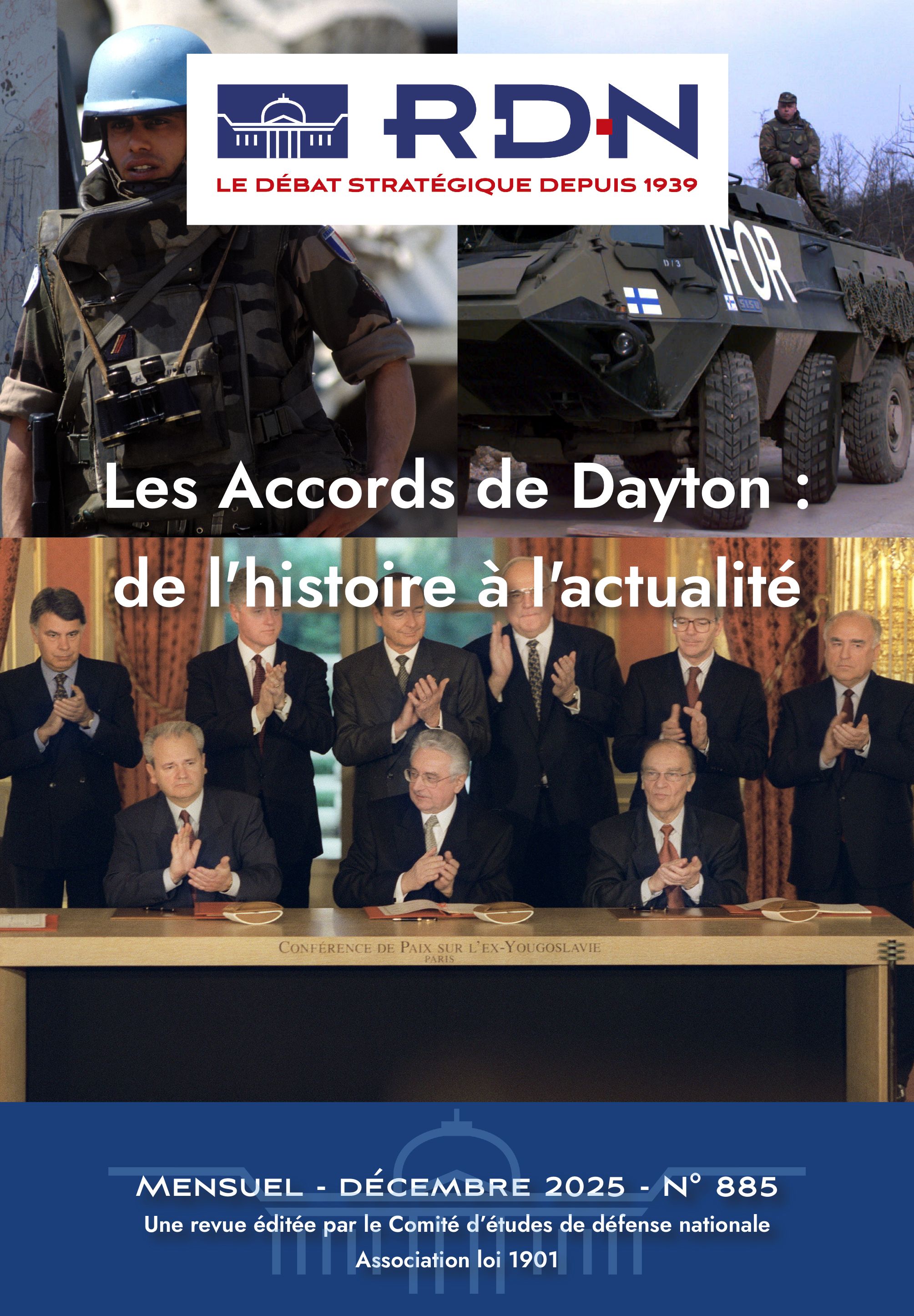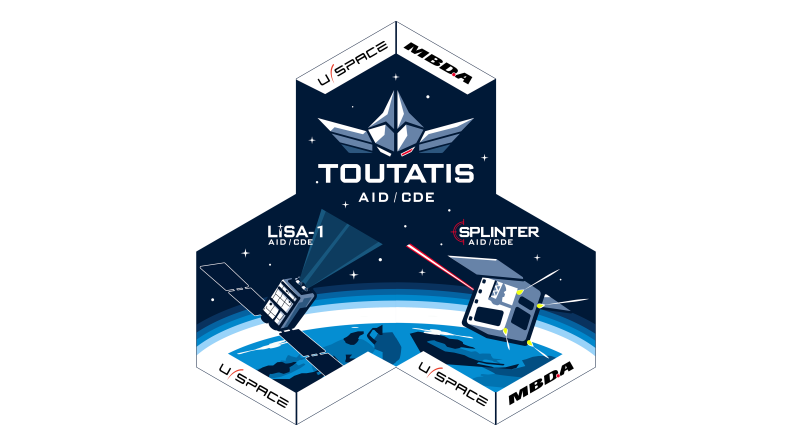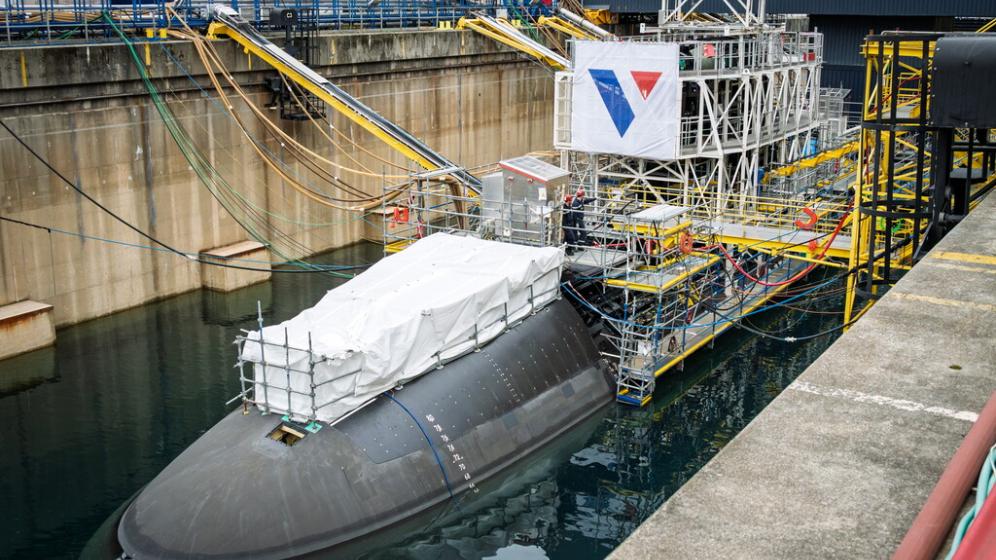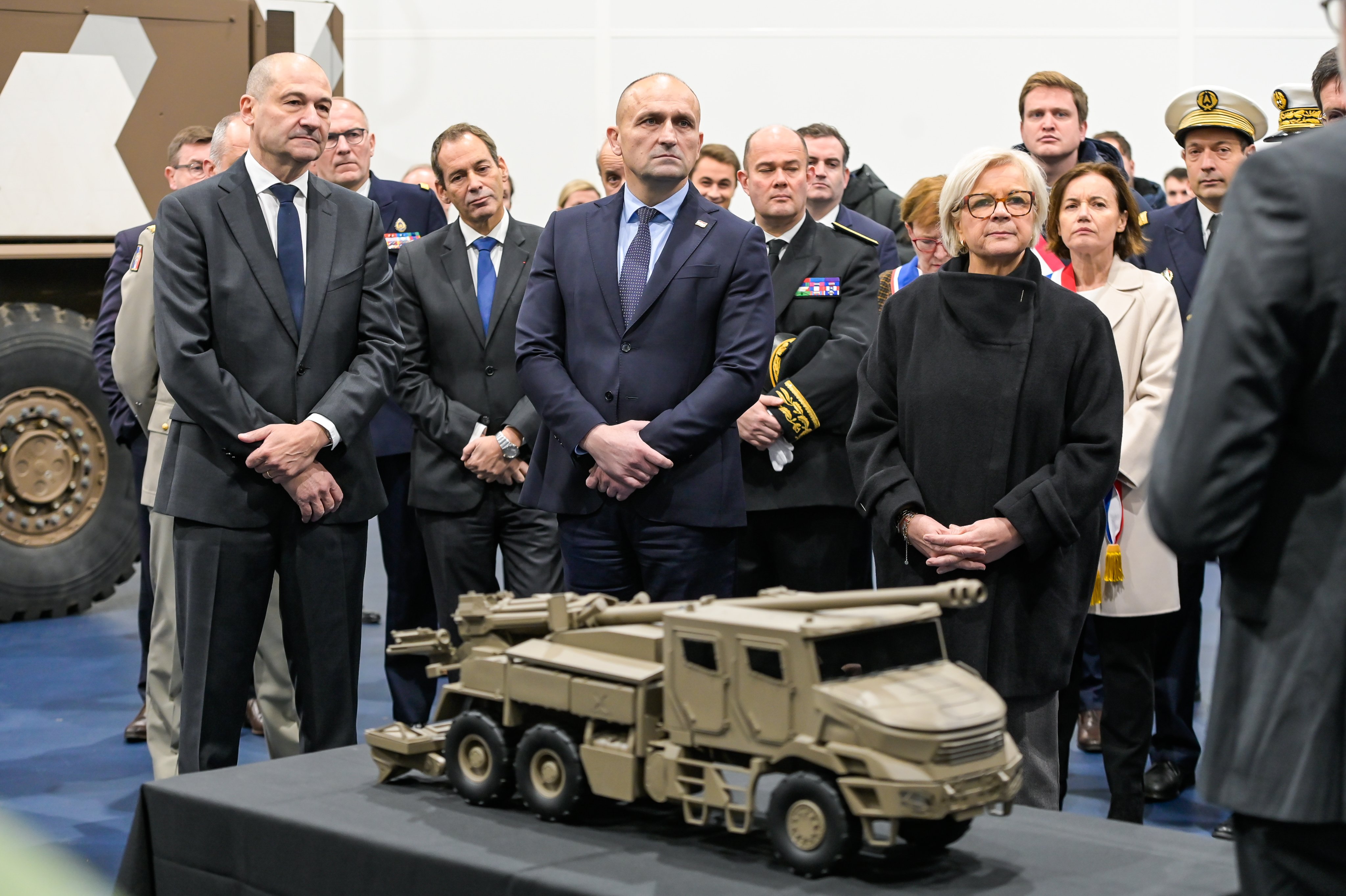The French Air and Space Force contributes to the use of the third dimension as a diplomatic field of manoeuvre by deploying its assets for the purposes of influence or coercion. Deployments such as Pégase, in 2022, illustrate this ‘diplomacy of air power’, based on force and power projection, in the support of French Indo-Pacific strategy.
Influence and Coerce: the Diplomacy of Air Power
International relations theoreticians have traditionally opposed diplomacy and war. In Raymond Aron’s rational analysis of international relations, Paix et guerre entre les nations, the diplomat and the soldier symbolise relations between states which, in their very essence, offer the alternatives of war or peace.(1) The power of a state at the international level therefore comes from its ability to impose its will, be it by arms or by diplomatic negotiation.
Nevertheless, these alternatives would not appear to be completely independent, and Raymond Aron admits a degree of porosity in stating that if, by definition, strategy and conduct of military operations play no part when there are no operations, then military weight is an integral part of the diplomats’ instruments.(2) This was the case in June 2002, for example, when the United States deployed USS George Washington in the Persian Gulf to put pressure on Iraq, whom it accused of producing weapons of mass destruction and supporting terrorism. Admiral Michael G. Mullen, commander of the naval-air group, told the press that he considered the deployment as the backbone of contemporary diplomatic effort. That role was also acknowledged by the international relations historian Jean-Baptiste Duroselle who, in his foreword to Diplomatie et outil militaire by Jean Doise and Maurice Vaïsse, writes: so, it is, in the vast machine which turns the wheels of foreign policy of a great country, that the power of the military plays a specific and essential role, but not an absolute one.(3)
This use of the military by international actors, be they state or inter-state organisations such as the UN or NATO, might be referred to as military diplomacy. Raymond Aron uses the term to describe relations between NATO member countries, as he uses economic diplomacy to describe collaboration between states within GATT, the forerunner of the World Trade Organisation.(4) Air diplomacy could be defined as a form of military diplomacy, but in the context of a country’s foreign policy, in addition to military aviation we should also include civil aviation, aeronautical industry, air bases and—lest they be forgotten—the aviators themselves. Given that, how can the export of Dassault Rafale aircraft not be included in the broader field of French air diplomacy, just as foreign sales of the Lockheed Martin F-35 Lighting II are part of US air diplomacy? In these five areas we find the constituents of air power analogous to those of sea power as defined by the American Admiral Alfred Mahan in the nineteenth century. Perhaps the most appropriate formula to speak of the contribution of air power to a country’s foreign policy would be air power diplomacy.(5) This article intends first to offer a definition of air diplomacy, and to classify its various modes of action, before looking at its recent applications.
The Concept of Air Diplomacy
What exactly is meant by air diplomacy? It can be cooperative in form, like diplomacy in general, or coercive. These two facets were mentioned in 2014, for example, when, during a colloquium on military diplomacy by Philippe Errera, then Director of strategic affairs in the French Ministry of Defence, he said on the subject of air power that its use beyond national territory carries a de facto political dimension. Accession to this ‘diplomacy through air power’ offers a form of coercive diplomacy and at the same time a diplomacy of influence. Across the spectrum of international relations, which stretches from peace to war, air diplomacy can play a part in sending messages in peace time as well as in the grey period that lies between peace and war.
The main methodological difficulty lies in distinguishing between what relates to coercive air diplomacy and what concerns war. In a significant part of that spectrum, diplomacy and war are closely entangled, such that the military tool might be used during an essentially diplomatic process or that diplomacy might intervene in a principally military context. Yet how can we differentiate one from the other when states no longer legally declare war? Military force is applied differently in a diplomatic situation from when it is one of war. We merely have to remember the example of the French restrictions imposed in 1999 on the choice of targets for NATO’s Allied Force air campaign, by the refusal to destroy bridges across the Danube in Belgrade.
This distinction between war and coercive diplomacy can be made thanks to General Beaufre, who unites diplomacy and war in what he calls indirect strategy, as distinct from direct strategy. In An Introduction to Strategy, he defines indirect strategy as inspiring all forms of conflict that do not directly seek a solution through confrontation of military forces, but by the least direct methods of a political or economic, or even of a military order (a revolutionary war), and proceeding by a series of actions independently of negotiations (Hitler’s strategy from 1936 to 1939).(6) If we draw on Beaufre’s definition of indirect strategy, we can sustain the argument that air diplomacy links the cooperative use of air assets in relations between states with their coercive use whenever the solution is not sought through confrontation of military might but through negotiation of a diplomatic solution.
The Taxonomy of Air Diplomacy
Limited like that, air diplomacy would nevertheless appear to have tremendous scope. An initial method of analysing it would be to draw inspiration from the studies of the American international relations theoretician, Arnold Wolfers, on the aims of foreign policy in which he classifies different foreign policies as a function of the objectives that states set for themselves.(7) In Paix et guerre entre les nations, Raymond Aron also uses a taxonomy based on the nature of the real or abstract objectives that states seek to gain. Other studies have devised different classifications, including those of James Cable on naval diplomacy, which lists over 200 naval operations from 1919 to 1979, Barry M. Blechman and Stephen S. Kaplan, with 215 US operations from 1946 to 1975 and Hervé Coutau-Bégarie, who considers some 170 naval operations from 1969 to 2009.(8) Inspiration from these works on naval power, in particular those of Hervé Coutau-Bégarie, allows us to discern seven categories of air diplomacy, divided into two major families, influence and coercion:
• Symbolic, for example, demonstrations by teams like Patrouille de France (e.g., when the Patrouille de France flew over the Great Wall of China in October 2004, during the ‘Year of France’ in China).
• Humanitarian, whose aim is to come to the aid of populations that are victim of natural disasters or armed conflicts (e.g., the intervention of 4 C-160 in Peru in June 1970 following a violent earthquake).
• Cooperative, with the aim of promoting bilateral or multilateral relations between states by encouraging cooperation on aerospace matters or by promoting sales of civil and military aerospace materiel (e.g., the French participation since 1981 in the US Exercise Red Flag at Nellis Air Force Base, Nevada).
• Preventative, whose aim is to warn of the possible outbreak or spread of a conflict (e.g., the stabilising effect of pre-positioned air forces).
• Protective, with the aim of evacuating nationals threatened by a conflict (e.g., Operation Requin in Gabon in May 1990 with 2 DC-8, 1 Falcon 900, 2 C-130 and 11 C-160 which permitted the evacuation of over 2,000 French and foreign nationals).
• Deterrent, by demonstrating air capability to prevent a conflict from breaking out or spreading (e.g., Operation Chevesne in January 1984, in which 4 Jaguar flew on a raid to Beirut from their base in France).
• Coercive, to limit the use of air power to cause another state to change its attitude (e.g., Operation Hamilton against Syria in April 2018 following the use of chemical weapons in Douma by Bashar al-Assad’s regime).
Air diplomacy, like space diplomacy, albeit in a different environment, gives added value to the third dimension as a diplomatic field of manoeuvre whilst allowing the AAE to retain its essence as a political and strategic tool of force and power projection.
The Air and Space Force in the Field of International Relations
The political and strategic objectives of air diplomacy are, on one hand, to underline the vital position of the air environment in the stakes of sovereignty and power, and on the other, to guarantee freedom of access to it, freedom of navigation and respect for international law within it.
Air diplomacy is closely linked to French political and strategic intentions, and provides permanent cover to military and operational objectives. The AAE’s exercises therefore primarily focus on developing and maintaining skills within a framework of national or coalition operations, including interoperability, training and support. In this way, air and space diplomacy is inseparable from the overseas relations activity of the AAE, which is principally operational and committed to strategic partnerships. It is fully in line with production of effects for the six strategic functions as defined in the 2022 National Strategic Review.(9) This diplomacy aims in particular at conducting activity which, by sending strategic signals, uses the advantages of air power to deter our competitors from challenging us, and prepares for potential confrontations. Furthermore, air and space diplomacy also carries economic aims linked to French industrial policy through the support of exports and public promotion of French know-how and industrial excellence.
Airways of Power and Strategic Signalling
In addition to its capability to operate and project from home territory, air and space diplomacy relies on a number of strategic air hubs—bases in overseas territories or in foreign countries and other points which serve as support or unloading stages or platforms for operating A330 Multi Role Tanker Transport (MRTT), Rafale or A400M—which form a worldwide map of the AAE’s Airways of Power that summarises the security challenges, the potential value of these places and the construction of a network of allied air forces in support of our air diplomacy.
Air diplomacy opens up a field of initiatives within these Airways of Power ranging from cooperation to strategic signalling. Included in this are organising bilateral or multilateral AAE exercises, symposiums and congresses in which the AAE participates, preparation or support for operations and organisation of stagings in liaison with embassies. Air diplomacy is the integral, soft power version of Air Power Advocacy, embodying a form of force and power projection.
Maintaining a capability for forward air projection in key regions of the world strengthens our links with allies and enables us to contribute to deterring acts of aggression whilst offering the capability to react to crises by sending strategic signals. In the regions where this strategic posture has been adopted it affords the AAE the essential strategic access needed to respond to the defence of national interests.(10)
An Example of Air Diplomacy Serving French Strategy: Pégase 2022, Projection in the Indo-Pacific region
The Indo-Pacific region stretches from the coast of East Africa to the coast of South America. It is by nature extremely mixed and vital to the world economy, accounting for 30 per cent of world trade and 60 per cent of the worldwide population. It is an area of tensions, between powers including India, China and the United States, and is affected by problems of piracy and illegal fishing, trans-national organised crime, illegal immigration, Jihadist terrorism and climate change. Hence the Indo-Pacific is a region that attracts great attention and is the subject of a specific strategy(11) presented by the President of the Republic, founded upon four pillars—security, economy, multilateralism and environmental diplomacy. As a balancing power (see the 2022 National Strategic Review), France is fully committed to the region by virtue of the concentration of its interests there, including trading partners, two million French nationals and three-quarters of France’s entire exclusive economic zone (EEZ). France ensures and defends the integrity of its sovereignty in the region, and the protection of its citizens, its territories and its EEZ. In addition, it contributes to the security of spaces in the region through promoting military and security cooperation, and with its partners in preserving access to common spaces in a climate of strategic competition and hardening of military environments.
The Air and Space Force participates fully in national policy through its contribution to air diplomacy. This includes regular power projection operations in the Indo-Pacific region. In 2022, the AAE conducted a large-scale deployment departing from France to the Indo-Pacific region. Called H. Brown-Pégase, the mission followed the earlier deployments in 2021 (Heifara) and 2018 (Pegase). It was a positive demonstration of operational military strategy in the Asia-Pacific region and of the Indo-Pacific element of the European Union’s Strategic Compass,(12) published during the French presidency of the EU. The deployment in three phases involved 170 airmen who travelled over 18,000 km from mainland France and reinforced our strategic facilities in the region. The first phase, Henri Brown,(13) concerned the deployment to New Caledonia of 3 Rafale, 2 A330 and 2 A400M Atlas in under 72 hours. The second phase, Pitch Black, was designed to train AAE crews and their partners, Australia in particular, in a complex, high-intensity environment involving over 100 aircraft and 2,500 personnel from 17 Nations. Finally, the third phase, Pégase, had two enhanced stages in Indonesia and Singapore, and a final stage in the air base in the United Arab Emirates. These exercises were an ideal showcase for the performance of the aircraft used: several countries in the region, including India, Australia, Indonesia, Singapore and Malaysia have procured some of the aircraft. This is proof that air diplomacy clearly has an economic dimension. On a political level, these operations boost our credibility in the region, in particular for South Pacific nations which have limited means and whose relations with China are often delicate.
The cooperative and protective air diplomacy exercised by the AAE above all affirms French sovereignty, even in this region furthest from mainland France. It also demonstrates that France is a reliable, credible and reactive ally for regional security. Furthermore, it shows a commitment to freedom of navigation in the air and at sea, and to acting in accordance with international laws and conventions. This is essential for ensuring the protection of sea lanes using aerial surveillance operations or by sending strategic signals to competitors or mafia-like organisations.
* * *
The exercises, organised meetings, enhanced visits and training periods are the immediate, visible applications of air diplomacy. On this principle, operations like Pégase 2022 also have a symbolic function in the strong strategic message they send to Indo-Pacific countries by the deployment of 170 personnel, Rafale and considerable logistic support. It also has a humanitarian element that is both preventative and protective it demonstrates the availability, readiness, equipment and skills that the AAE can mobilise in case of a major environmental crisis and in support of forces in place as part of the policy of securing our overseas territories. ♦
(1) Aron Raymond, Paix et guerre entre les nations [1962], Calmann-Lévy, 1984, p. 18.
See also, Peace and War, original English translation, Doubleday, 1966. New imprint by Routledge, 2003.
(2) Ibid p. 37 (French edition)
(3) Doise Jean et Vaïsse Maurice, Diplomatie et outil militaire [Diplomacy and the military tool], Imprimerie nationale, 1987, p. 10.
(4) Aron Raymond, De l’analyse des constellations diplomatiques [On the study of diplomatic galaxies], Revue française de science politique, Vol. 4, No 2, 1954, p. 239.
(5) Translator’s note: from this point on, the simpler term air diplomacy is used, to avoid repetition of the rather clumsy, albeit correct, air power diplomacy or the diplomacy of air power.
(6) Général Beaufre, Introduction à la stratégie (1963), Hachette, 1998, p. 63.
Published in English as An Introduction to Strategy, Faber and Faber, 1965.
(7) Wolfers Arnold, Discord and Collaboration: Essays on International Politics, Baltimore, John Hopkins Press, 1962, p. 67-80.
(8) Cable James, Gunboat Diplomacy 1919-1979, Political Applications of Limited Naval Force, New York, Saint Martin’s Press, 1981; Blechman Barry M. et Kaplan Stephen S., Force without War: US Armed Forces as a Political Instrument, Washington, Brookings Institution Press, 1978; Coutau-Bégarie Hervé, Le meilleur des ambassadeurs - Théorie et pratique de la diplomatie navale, Économica, 2010.
(9) Secrétariat général de la défense et de la sécurité nationale (SGDSN), Revue nationale stratégique, 2022—RNS [National Strategic Review, 2022], p. 21 (https://www.sgdsn.gouv.fr/).
(10) Cf. Sand Ivan, Géopolitique de la projection aérienne [Geopolitics of air projection], La Documentation française, 2022.
(11) Ministère de l’Europe et des Affaires étrangères (MEAE), La Stratégie de la France dans l’Indopacifique [French strategy in the Indo-Pacific], February 2022, 77 pages (https://www.diplomatie.gouv.fr/).
(12) Council of the european union, A Strategic Compass for a stronger EU security and defence in the next decade, 21 March 2022, (https://www.consilium.europa.eu/).
(13) Editor’s note: from the name of a Kanak (inhabitant of New Caledonia) who lived from 1924-1989 and was engaged in the Free French Air Forces, and served with the 2nd RCP, 4th SAS during the Second World War.







